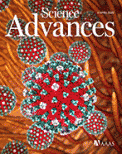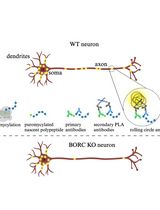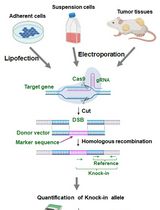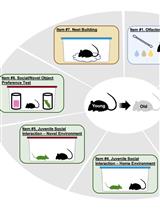- EN - English
- CN - 中文
Treadmill Running of Mouse as a Model for Studying Influence of Maternal Exercise on Offspring
以跑步机运动小鼠为模型研究母体运动对后代的影响
发布: 2020年12月05日第10卷第23期 DOI: 10.21769/BioProtoc.3838 浏览次数: 4077
评审: Miao HeXiaoyu LiuAnonymous reviewer(s)
Abstract
Epidemiological studies robustly show the beneficial effects of maternal exercise in reducing maternal birth complications and improving neonatal outcomes, though underlying mechanisms remain poorly understood. To facilitate mechanistic exploration, a protocol for maternal exercise of mice is established, with the regimen following the exercise guidelines for pregnant women. Compared to volunteer wheel running, treadmill running allows precise control of exercise intensity and duration, dramatically reducing variations among individual mouse within treatments and facilitating translation into maternal exercise in humans. Based on the maximal oxygen consumption rate (VO2max) before pregnancy, the treadmill exercise protocol is separated into three stages: early stage (E1.5 to E7.5 at 40% VO2max), mid stage (E8.5 to E14.5 at 65% VO2max), and late stage of pregnancy (E15.5 to birth at 50% VO2max), which demonstrated persistent beneficial effects on maternal health and fetal development. This protocol can be useful for standardizing maternal treadmill exercise using mice as an experimental model.
Keywords: Maternal exercise (母体运动)Background
Maternal exposure to adverse environmental stimuli leads to various physiological changes in the offspring (Hay et al., 2016; Walejko et al., 2019; Battarbee et al., 2020), including predisposition of offspring to the development of obesity and type 2 diabetes (Godfrey et al., 2017; Wesolowski et al., 2018). Physical exercise is highly accessible and a prominent therapeutic tool to combat diet-induced obesity in adults (Peres Valgas da Silva et al., 2019). Epidemiological studies robustly show the beneficial effects of maternal exercise in improving maternal health and neonatal outcomes (Hopkins and Cutfield, 2011; Nascimento et al., 2012; Moyer et al., 2016; da Silva et al., 2017; Rogozinska et al., 2017; Davenport et al., 2018a and 2018b; Ming et al., 2018; Beetham et al., 2019; Hoover and Louis, 2019; Pastorino et al., 2019; Wang et al., 2019). But surprisingly, the biological effects of maternal exercise on offspring health have only been sparsely examined in the context of maternal obesity and high fat diet intake (Laker et al., 2014; Stanford et al., 2015; Stanford et al., 2017; Musial et al., 2019; Uddin et al., 2019), as well as normal chow diet (Raipuria et al., 2015), the effects of maternal exercise of healthy mothers on fetal development remain largely unexplored. Mice is the most commonly used model for biomedical studies; to facilitate mechanistic exploration, an exercise protocol for pregnant mice which can be easily translated into exercise in pregnant women is needed.
Both treadmill exercise and voluntary wheel running are commonly used for exercise training in rodents. We recommend to use treadmill exercise because the exercise intensity and length can be precisely controlled, which is very similar to treadmill training in humans, increasing translational value. On the other hand, large variations in exercise intensity and duration among individual mouse exist in voluntary wheel running, making data interpretation difficult (Goh and Ladiges, 2015). Also, the exercise intensity and duration cannot be controlled in voluntary wheel running and thus difficult to be translated into human exercise. Nonetheless, treadmill exercise training induces low levels of acute stress to mice, but this concern can be alleviated by applying the same procedure to both control and exercised mice. Actually, regular treadmill exercise at moderate intensity has protective effects in stress-related symptoms (Patki et al., 2014; Seo, 2018; Loprinzi and Frith, 2019). Based on exercise guidelines published by American College of Obstetricians and Gynecologists (Zavorsky and Longo, 2011), we propose the following protocol for treadmill exercise, which composes of three stages with exercise intensity calculated based on the maximal oxygen intake (VO2max) before pregnancy. The initial stage is from embryonic day 1.5 (E1.5) to E7.5, mid-stage from E8.5 to E14.5, and late-stage from E15.5 to birth, with the intensity of exercise at 40%, 65%, and 50% of VO2max, respectively. Using this protocol, we found that maternal exercise slightly reduced weight gain during pregnancy, but had no effect on birth weight; in addition, offspring metabolic health was improved due to maternal exercise and detailed changes were reported previously (Son et al., 2019 and 2020). Thus, this protocol fits for studying maternal impacts on fetal development and long-term health of the next generation.
Materials and Reagents
Adult C57BL/6J pregnant mice
High-fat diet (HFD), 60% energy from fat (Research Diets, D12492 )
Equipment
Oxymax Fast 4 lane modular treadmill system (Columbus Instruments, Columbus, OH, USA)
Indirect open circuit calorimetry system (Comprehensive Lab Animal Monitoring System, CLAMS; Columbus Instruments, Columbus, OH, USA)
Software
Oxymax for Windows v4.93 (Columbus Instruments, Columbus, OH, USA) with listing parameters: VO2, O2 in&out, DO2, ACCO2, VCO2, CO2 in&out, DCO2, ACCCO2, RER, HEAT, Flow (Figure 1)

Figure 1. Calorimeter and software for measuring oxygen consumption. A. Open circuit calorimeter. B. Software for open circuit calorimeter.
Procedure
文章信息
版权信息
© 2020 The Authors; exclusive licensee Bio-protocol LLC.
如何引用
Readers should cite both the Bio-protocol article and the original research article where this protocol was used:
- Chae, S. A., Son, J. S., Zhu, M., de Avila, J. M. and Du, M. (2020). Treadmill Running of Mouse as a Model for Studying Influence of Maternal Exercise on Offspring. Bio-protocol 10(23): e3838. DOI: 10.21769/BioProtoc.3838.
- Son, J. S., Zhao, L., Chen, Y., Chen, K., Chae, S. A., de Avila, J. M., Wang, H., Zhu, M. J., Jiang, Z. and Du, M. (2020). Maternal exercise via exerkine apelin enhances brown adipogenesis and prevents metabolic dysfunction in offspring mice. Sci Adv 6(16): eaaz0359.
分类
发育生物学 > 繁殖
神经科学 > 行为神经科学 > 实验动物模型
您对这篇实验方法有问题吗?
在此处发布您的问题,我们将邀请本文作者来回答。同时,我们会将您的问题发布到Bio-protocol Exchange,以便寻求社区成员的帮助。
Share
Bluesky
X
Copy link













